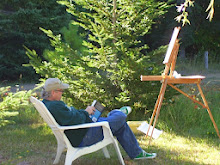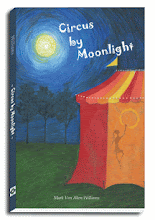On May 11, three teenage boys (ages 18, 17 and 17) assaulted a homeless man in Reynoldsburg, Ohio. When they were done with him, the victim was a bloody mess. Just one year ago, a man was shot in Columbus, when he tried to stop two teenagers from throwing rocks and bottles at a homeless man.
This is not an uncommon occurrence. For years, advocates and homeless shelter workers have given reports of men, women, and even children being harassed, beaten, set on fire, and even decapitated.
What is happening to our youth?
In Los Angeles, a homeless man was recently doused with gasoline and set ablaze. And here’s the troubling part: the assaulters had targeted him in mind. The suspects remain at large.
And if this wasn’t bad enough, you can go to You-Tube and watch, what are called, Bumfights. Yes--teenagers go into areas where the homeless live, pay them to fight each other, and record it for entertainment. The National Law Center on Homelessness & Poverty attributes a 65% increase in violence against the homeless due to these videos. The numbers are probably even higher, since many attacks are never reported.
The National Coalition for the Homeless have statistics from 1999 through 2007, which report 774 acts of violence against the homeless who actually receive shelter (this does not include those who live on the street), resulting in 217 murders. Of these murders, only 85 qualified as hate crimes.
Excuse me?
The U.S. Congress, in 1968, defined hate crimes as crimes in which the defendant intentionally selects a victim because of their race, color or national origin (Title 18 Section 245). It mandates that the government must prove both that the crime occurred because of a victim’s membership in a designated group and because the victim was engaged in certain specified federally-protected activities, such as serving on a jury, voting, or attending public school.
There have been several laws enacted subsequently to provide additional coverage. The Hate Crimes Statistics Act of 1990 authorizes the Justice Department to collect data from law enforcement agencies about crimes that “manifest evidence of prejudice based upon race, religion, sexual orientation, or ethnicity.” It, though, says nothing about economic or housing status. The poorest of the poor, again remain the “silent ones” in a culture that rewards wealth.
Is homelessness a disability? Certainly many are on the streets due to a disability, such as mental illness.
The Hate Crimes Sentencing Enhancement Act, of 1994, defines hate crimes as “a crime in which the defendant intentionally selects a victim, because of the actual perceived race, color, national origin, ethnicity, gender, disability, or sexual orientation of any person.” The problem is that this law only applies to attacks and vandalism that occur in national parks and on federal property.
We now need to ask ourselves—how and why are we responsible for the behavior of our youth?
Why are we, as communities, increasingly taking punitive actions against homeless people? And, does this send a message that these people are less than human and that attacking them is acceptable?
Let us not forget: Violence is learned behavior! Not only do children (remember-teenagers are children) learn behaviors from their family and peers, but also learn it from what they observe in their neighborhoods and in the community at large. These behaviors are then reinforced by what they see on television, on the Internet, and in video games.
The perpetrators of these crimes are angry adolescents. You simply do not commit murder unless you are angry and resentful. These are children who have, no doubt, lived with rage for years. They feel cut off socially and emotionally.
To deal with this dilemma, we have to start by seeing our society as an organism, in order for it to properly function. It must become an organic whole of internally-connected members who share a single, unconscious process.
So, where do we start?
Here are some ideas—
• The inclusion of housing status in the pending state and federal hate crimes legislation.
• Start with our communities. Begin with awareness about the causes and solutions to homelessness in our schools, and how to deal effectively and humanely with people experiencing homelessness in their communities.
• Have speakers visit both public and private schools for the purpose of information and education (made up of homeless and formerly homeless people).
• A public statement needs to come from the U.S. Department of Justice acknowledging that hate crimes and/or violence against people experiencing homelessness is a serious national trend.
• Guidelines for local police on how to investigate crimes against and work with people experiencing homelessness.
• “Housing Status” needs to be included in information to the checklist of data maintained as part of the National Incident Based Reporting System maintained by the FBI.
• Most important of all—our federal, state, and local governments should create and provide adequate affordable housing and services to bring an end to homelessness in our communities.
Subscribe to:
Post Comments (Atom)







1 comment:
I think your recommendations are worthwhile and hope they reach the monitors of the "powers that be." I heard years ago about a town in Europe where all the mentally disabled adults are "adopted" into families who house them and incorporate them into family life. When the parents in the family die, their children then care for these folks, who cannot live on their own. As such, the town does not have homeless people. Everyone has a place to fit in. Now, of course we can't all invite mentally ill people into our homes. But how nice it would be to have large institutions, such as the Athens Mental Asylum, which, forget the name, stressed peace, quiet, beauty, art, nature, as a way to soothe people's minds and provide them with safe housing. Surely there must be something good between the 19-20th c. asylums and our current nursing homes or the prison system, which houses many low intelligence and mentally ill people. At the nursing home I visit regularly, and have for eight years, there are many men between 20 and 60 who are not able to live on their own or unsupervised, but you get such limited amounts of fresh air, plants/flowers, sports, music. How I wish it were otherwise!
As someone once said, we are all only one car accident, one stroke, one bang on the head away from being "one of them." And, in today's economic environment, perhaps we are only one job loss, one failed business, one poor refinancing decision, one illness away from becoming homeless.
Thank you for writing about this.
Post a Comment